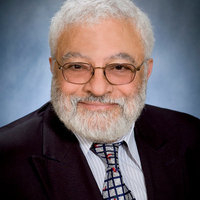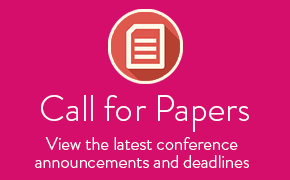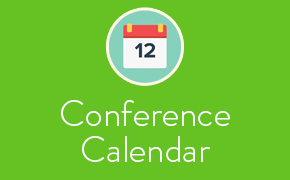Issue 54 : March, 2016
Interview with the Editor in Chief of the IEEE
Systems, Man, and Cybernetics Magazine, Prof.
Mo El-Hawary, Dalhousie University, Nova
Scotia, Canada.
The eNewsletter introduces Prof. Mo El-Hawary, founding Editor-in-Chief
of the IEEE Systems, Man, and Cybernetics Magazine
(http://www.ieeesmc.org/publications/smc-magazine ). The SMC Magazine
was started in 2015 and is published quarterly, with two issues already
printed. Its scope matches the technology areas within the Society's field
of interest.
Article subjects include the integration of the theories of communication, control, cybernetics,
systems engineering, human-factors engineering, as well as their application to the variety of
systems including human-machine, biological, technological, and societal. The Magazine is
intended to communicate to readers about the activities and actions of the SMC Society’s
governing body, its Technical Committees, and its Chapters. Furthermore, the Magazine will offer
educational material such as technical review papers, publish contributions on educational
activities, industrial and university profiles, conference news, book reviews, and a calendar of
important events.
eNewsletter: What is the current state of the SMC Magazine after one year of activity?
El-Hawary: I am very pleased to tell you that the Magazine has become a good part of the
Society’s landscape. SMC leading experts and senior volunteers are responding to the call for
contributions by offering high quality papers and by all indications our coverage has been well
received. It is well understood that you face an uphill battle unless you allow yourself a healthy one
year or more of high quality material for the content of the early issues of the magazine. This is
critical because a healthy magazine relies on a steady stream of contributions.
eNewsletter: What is your vision for the SMC Magazine, and how do you see it evolving?
El-Hawary: When we set out to establish the SMC Magazine as part of the Society’s publications
porfolio, leadership wanted to have an arm that disseminates technical articles that introduce and
educate about various areas of interest as defined by the scope of the society. This includes
tutorials, and review articles. In addition, articles related to current and ongoing work of interest to
the society and its members are also valued. Having been part of the team that worked on seeking
approval of TAB (Technical Activities Board,) it makes great sense for my vision to reflect that
which was foreseen only short few years ago. I personally feel that there exist a highly desirable
capability to mirror transactions areas.
eNewsletter: What is the difference between the SMC Magazine and the SMC eNewsletter? Can
you advise prospective authors as to where they should submit contributions between these two
publications?
El-Hawary: The simplest difference is that the eNewsletter covers items of higher urgency than
Magazine items which are not urgent. Longer, more deliberative articles are best suited for the
Magazine. Part of the eNewsletter mission is to inform of current state of the society such as
tables of content of the Transactions, Magazine, and Website.
eNewsletter: What advice would you offer to authors who may be interested in submitting their
contributions to the SMC Magazine?
El-Hawary: Pay attention to how you present your material in a way that is well understood by a
broader audience than those of experts in your subject area. Avoid assuming that your readers are
as interested as you are in the area you cover, but hope that, after reading your article, they will
want to work in your area.
eNewsletter: Can you tell us a little bit about your research that brought you to this appointment as
EiC of the SMC Magazine? How long have you been involved with the SMC Society and in what
capacity?
El-Hawary: As engineering undergraduate students we were inspired by the quest for landing on
the moon and space exploration. My generation of engineers was attracted to control and system
theory and the elegance of optimal and nonlinear control. As a graduate student at the University of
Alberta, I studied Sampled Data Control, Nonlinear, Optimal and of course Linear Control under G.
Christense, V. Gourishankar, and J. Kingma. In that era, Kalman filters, dynamic programming,
Pontryagin’s maximum (or minimum) were recently discovered and fashionable. I became an IEEE
Student member in the late 1960’s and joined the Control and Power Societies. SMC was created
in the early 1970’s, and I had the good fortune of being invited to organize and chair the 1984 IEEE
SMC Conference held in Halifax, Nova Scotia. My research work involves fuzzy systems and other
aspects of computational intelligence which are part of the fields of interest for the Society.
eNewsletter: In your opinion, what are the strengths and the weaknesses of the SMC Society
publications, including the Magazine?
El-Hawary: The strength of the society stems from the well connectedness of its members and
senior leadership. Its weakness is that it needs to make inroads to expand its membership base in
areas of other closely related IEEE societies. The magazine’s strengths are her authors and
contributors. A weakness of the magazine is that it needs a more generous page limits.
eNewsletter: This is an exciting beginning of a new SMC publication. Those of us associated with
the eNewsletter and the SMC Society are looking forward to seeing how this publication develops!
Thank you for your time!
El-Hawary: Thank you for the opportunity to communicate to our members about what we all see
as exciting times.

Follow Us:







